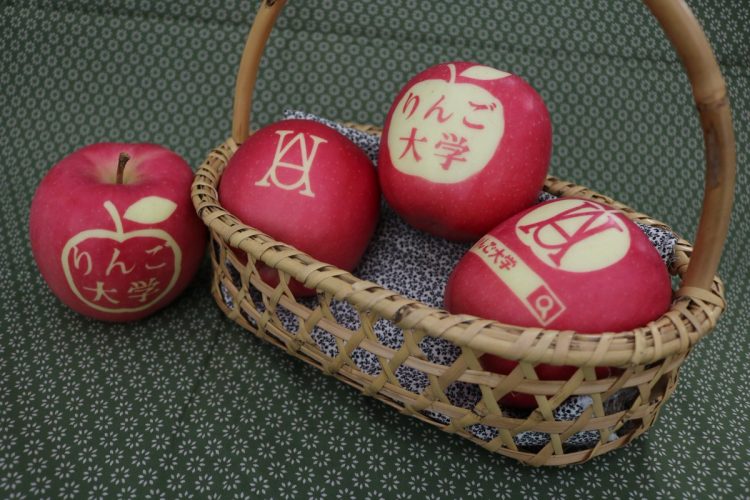‘Mojie Ringo’ is a Japanese technique of harnessing the power of the sun to create beautifully decorated apples without the use of any sort of chemicals.
For centuries, apple growers in Japan’s Aomori Prefecture have been creating stunning heirloom apples by using the mojie ringo technique. The process is fairly simple, as basically implies depriving the apples of sunlight for a period of time and then applying stencils to ensure that some portion of the apple peel remains discolored. Most often than not, mojie ringo apples are decorated with messages and symbols of good fortune and prosperity, and are offered as gifts.

Large apple varieties like Mutsu or Stark Jumbo are most suitable for mojie ringo, as they provide more surface area for intricate design. Preparation begins in January, with a pruning operation, to ensure that remaining blossoms receive plenty of sunlight. Then, growers use fluffy wands to hand pollinate each of the apple tree flowers, and then once fruits begin to form, they are covered with multi-layered plastic bags to both protect them from pests and shield them from sunlight.
View this post on Instagram
Keeping the apples “in the dark” for long periods of time increases their photosensitivity, so when the plastic bags are finally removed, they begin to produce anthocyanin, a component that turns the skin red. During the final stage of the mojie ringo process, stencils are applied on the surface of the apple to ensure that only the skin around the stencil turns red.
View this post on Instagram
The stencils are removed during harvesting, to expose the almost white peel underneath. The stencils need to be flexible, because the fruits continue to grow, and otherwise the designs could be compromised.
View this post on Instagram
According to Culture Trip, the mojie ringo technique was perfected by Aomori farmer Haruo Iwasaki, whose son, Chisato Iwasaki, is widely regarded as one of the most talented apple artists today.
View this post on Instagram
Although the mojie ringo technique seems fairly straightforward, it requires a lot of work and patience over long periods of time, and for many growers the effort and attention just aren’t worth it from an economic standpoint. That is why the old tradition is slowly fading, with only a few Aomori orchards producing the eye-catching fruits.
The mojie ringo technique is also very popular in China and other Asian countries under the name “apple tattooing”.






